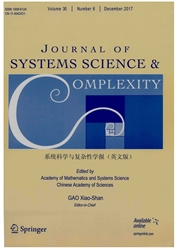

 中文摘要:
中文摘要:
这份报纸为一个保险公司考虑一个比例的再保险投资问题和一个 excess-of-loss 再保险投资问题,在危险财产的价格过程和保险公司的财富过程是 Markovian 政体切换描述的两个的地方。保险公司的目标被假定与一个州依赖者的实用程序函数从她的终端财富最大化期望的指数的实用程序。由采用动态编程途径,最佳的价值功能和最佳的再保险投资策略被导出。另外,最佳的策略和最佳的值函数上的一些参数的影响被分析,并且大量有趣的结果比比例的再保险没在切换政体的跳散开模型被保持的被发现例如结论 excess-of-loss 再保险好。
 英文摘要:
英文摘要:
This paper considers a proportional reinsurance-investment problem and an excess-of-loss reinsurance-investment problem for an insurer, where price processes of the risky assets and wealth process of the insurer are both described by Markovian regime switching. The target of the insurer is assumed to maximize the expected exponential utility from her terminal wealth with a state-dependent utility function. By employing the dynamic programming approach, the optimal value functions and the optimal reinsurance-investment strategies are derived. In addition, the impact of some parameters on the optimal strategies and the optimal value functions is analyzed, and lots of interesting results are discovered, such as the conclusion that excess-of-loss reinsurance is better than proportional reinsurance is not held in the regime-switching jump-diffusion model.
 同期刊论文项目
同期刊论文项目
 同项目期刊论文
同项目期刊论文
 期刊信息
期刊信息
